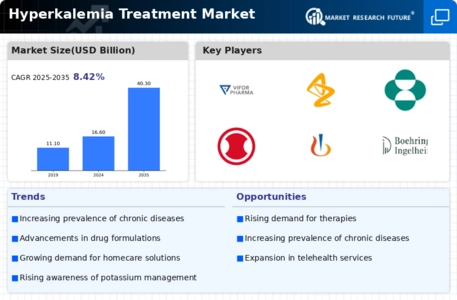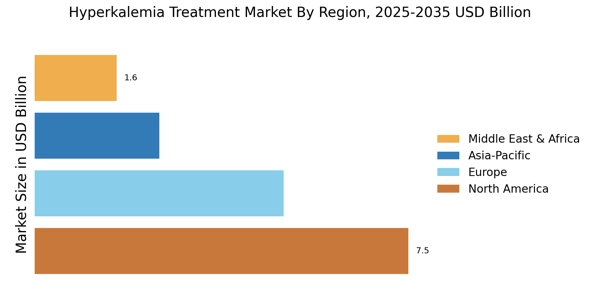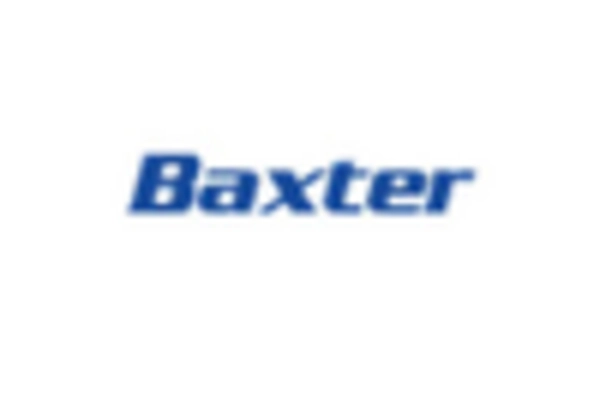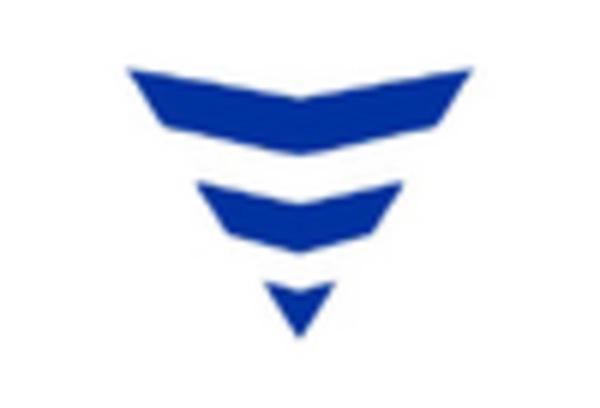Increasing Incidence of Hyperkalemia
The rising incidence of hyperkalemia, particularly among patients with chronic kidney disease and heart failure, is a primary driver of the Hyperkalemia Treatment Market. Studies indicate that approximately 20 to 30% of patients with chronic kidney disease experience elevated potassium levels. This growing patient population necessitates effective treatment options, thereby propelling market growth. Furthermore, the aging population is more susceptible to conditions that lead to hyperkalemia, such as diabetes and hypertension. As healthcare providers increasingly recognize the need for timely intervention, the demand for innovative therapies is likely to escalate, further stimulating the Hyperkalemia Treatment Market. The increasing awareness of hyperkalemia's potential complications, including cardiac arrhythmias, also contributes to the urgency for effective management solutions.
Regulatory Support for New Treatments
Regulatory support for the approval of new treatments is a crucial factor driving the Hyperkalemia Treatment Market. Regulatory agencies are increasingly prioritizing the review and approval of innovative therapies aimed at managing hyperkalemia. This trend is evident in the expedited approval processes for drugs that demonstrate significant clinical benefits. The presence of clear regulatory pathways encourages pharmaceutical companies to invest in research and development, thereby enhancing the availability of effective treatment options. Moreover, the collaboration between regulatory bodies and industry stakeholders is likely to facilitate the introduction of novel therapies, which could address unmet medical needs in the hyperkalemia patient population. As a result, the regulatory landscape plays a pivotal role in shaping the future of the Hyperkalemia Treatment Market.
Advancements in Pharmaceutical Research
Recent advancements in pharmaceutical research are significantly influencing the Hyperkalemia Treatment Market. The development of novel potassium binders and other therapeutic agents has expanded treatment options for patients suffering from hyperkalemia. For instance, the introduction of newer agents that offer improved efficacy and safety profiles is likely to enhance patient compliance and outcomes. Market data suggests that the potassium binder segment is expected to witness substantial growth, driven by the increasing approval of innovative drugs. Additionally, ongoing clinical trials and research initiatives are expected to yield promising results, potentially leading to the introduction of breakthrough therapies. This dynamic environment fosters competition among pharmaceutical companies, which may further accelerate innovation within the Hyperkalemia Treatment Market.
Growing Awareness and Education Initiatives
Growing awareness and education initiatives regarding hyperkalemia are contributing to the expansion of the Hyperkalemia Treatment Market. Healthcare professionals are increasingly educated about the risks associated with elevated potassium levels and the importance of early detection and management. This heightened awareness is likely to lead to more frequent screening and diagnosis of hyperkalemia, resulting in increased demand for treatment options. Additionally, patient education programs aimed at promoting understanding of dietary potassium management and medication adherence are expected to enhance treatment outcomes. As healthcare systems prioritize preventive care and patient engagement, the emphasis on education is likely to drive growth in the Hyperkalemia Treatment Market, ultimately benefiting patients and healthcare providers alike.
Rising Demand for Home Healthcare Solutions
The rising demand for home healthcare solutions is emerging as a significant driver of the Hyperkalemia Treatment Market. As patients increasingly prefer receiving care in the comfort of their homes, there is a growing need for effective management of hyperkalemia outside traditional clinical settings. This trend is particularly relevant for elderly patients and those with chronic conditions who may face mobility challenges. The development of portable monitoring devices and telehealth services facilitates remote management of potassium levels, thereby enhancing patient convenience and adherence to treatment regimens. Furthermore, the integration of home healthcare solutions with existing treatment protocols is likely to improve patient outcomes and reduce hospital readmissions. Consequently, the shift towards home-based care is expected to play a pivotal role in shaping the future landscape of the Hyperkalemia Treatment Market.


















Leave a Comment